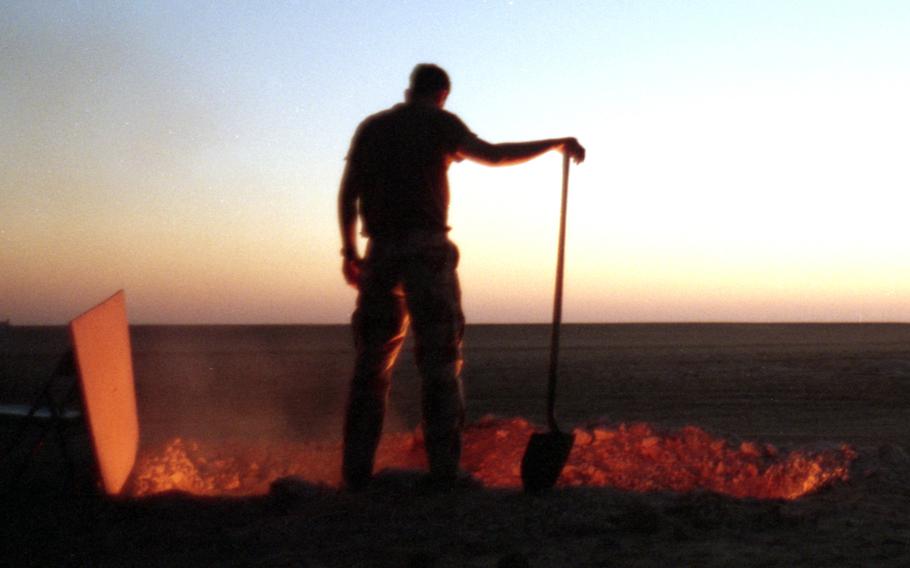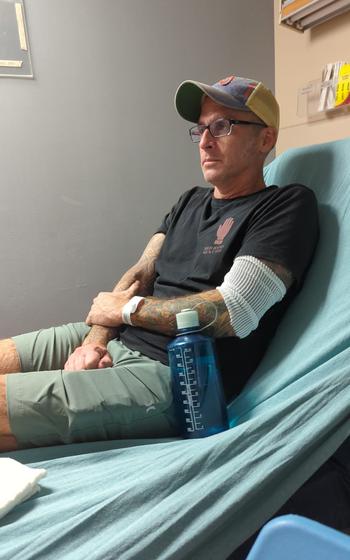
It takes more than 30 years on average after a service member is exposed to toxins for the Department of Veterans Affairs to acknowledge the illness, leaving tens of thousands of veterans waiting decades to receive compensation and health care, according to a new analysis by two veterans groups. (Vince Crawley)
WASHINGTON — It takes more than 30 years on average after a service member is initially exposed to toxins for the Department of Veterans Affairs to acknowledge the illness, leaving tens of thousands of veterans waiting decades to receive compensation and health care, according to a new analysis.
The Disabled American Veterans and the Military Officers Association of America released a report Wednesday that examined the reasons for prolonged delays by the VA in awarding disability benefits and offered recommendations for Congress to shorten the time that it takes to assist veterans exposed to toxins.
The analysis found veterans who have experienced toxic exposures have extremely long waits to get a determination from the VA of a presumptive service connection for their illnesses and injuries.
“There has been no change to my situation,” said Mark T. Jackson, a former Army staff sergeant, who served at Karshi-Khanabad Air Base in Uzbekistan in 2003 and 2004.
Jackson, 47, said he has been trying for more than a decade to have the VA acknowledge that his health problems are related to toxic exposures from radiation, caches of chemical weapons and jet fuel at the former Soviet base.

Mark T. Jackson, 47, a former Army staff sergeant, who served at Karshi-Khanabad Air Base in Uzbekistan in 2003 and 2004, said he has been trying for more than a decade to have the VA acknowledge his health problems are related to toxic exposures during his military service. (Photo provided by Mark Jackson)
Jackson has severe osteoporosis, anemia and a thyroid that quit functioning shortly after he left military service. He suffers frequent unexplained infections that require hospitalization. But he has only received benefits for his thyroid condition, which means he must cover the medical costs for his other conditions — either out of pocket or through private insurance.
“The onus is on me to prove everything,” Jackson said about his attempts to receive VA health care and disability compensation for medical conditions that he believes are related to toxic exposures at K2.
The VA, on average, takes 31 years to acknowledge a toxic exposure after the first incidence, according to the report. Presumptive service connections are established, on average, 34 years after the first exposures occurred. Presumption is a legal term for the link between a veteran’s health condition and military service.
Affected veterans often can access benefits more quickly when medical conditions are presumed to be connected to their military service.
“This analysis validated what we thought — that it takes decades to establish presumptives,” Peter Dickinson, senior executive adviser at the DAV, said about findings in the report.
Veterans with toxic exposures often don’t develop illnesses until years later, which makes it difficult to prove a connection to military service and contributes to the delays, according to the report. Veterans also tend to have a harder time obtaining evidence to support their claim of toxic exposure because they might not have known at the time that they were being exposed to hazardous materials or their health problems were related to it.
In addition, the analysis found policymakers “typically wait decades before establishing toxic-exposure presumptive service connections” because of evidence and information that is missing or incomplete.
The report, which is titled “Ending the Wait for Toxic Exposed Veterans,” offers recommendations for overcoming delays in connecting a toxic exposure to a service member’s illness.
Congress needs to establish deadlines and greater oversight for evaluating sites that might contain toxic materials, confirming service members were exposed to toxins, and establishing presumptive service connections for VA benefits, the report said.
“Each of these steps would be linked through a series of timelines, triggers, thresholds and deadlines, all based on well-grounded research and analysis,” the report said.
Congress also must invest more in research on how toxic exposures and environmental hazards impact veterans’ health.
The report described how it took decades for the military and VA to recognize the cancers and other diseases that Vietnam veterans later developed were connected to exposure to Agent Orange and other herbicides sprayed in Vietnamese jungles during the war.
“Although the Department of Defense was known to have used dangerous chemicals that service members were exposed to during the war, it took years for these men and women to develop cancers and other debilitating conditions that they believed were caused by Agent Orange exposure,” according to the report.
The VA has acknowledged 30 toxic exposures since World War I. About half of the exposures are now considered presumptive when awarding benefits.
Once a presumptive service connection is established, veterans can file claims for benefits for diseases and disabilities identified as resulting from the toxic exposure. They do not have to prove their illness was caused by the exposures.
Other toxic exposures connected to veterans’ illnesses and injuries have included radiation exposure from atomic testing in World War II, water contamination at Camp LeJeune in North Carolina and toxic fumes from sandstorms, burn pits and other airborne hazards in the Middle East and Afghanistan.
“As soon as there is any awareness [of a toxic exposure], there needs to be an acknowledgement of it by the federal government. There is no formal requirement now about when that should take place,” Dickinson said.